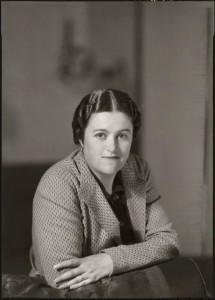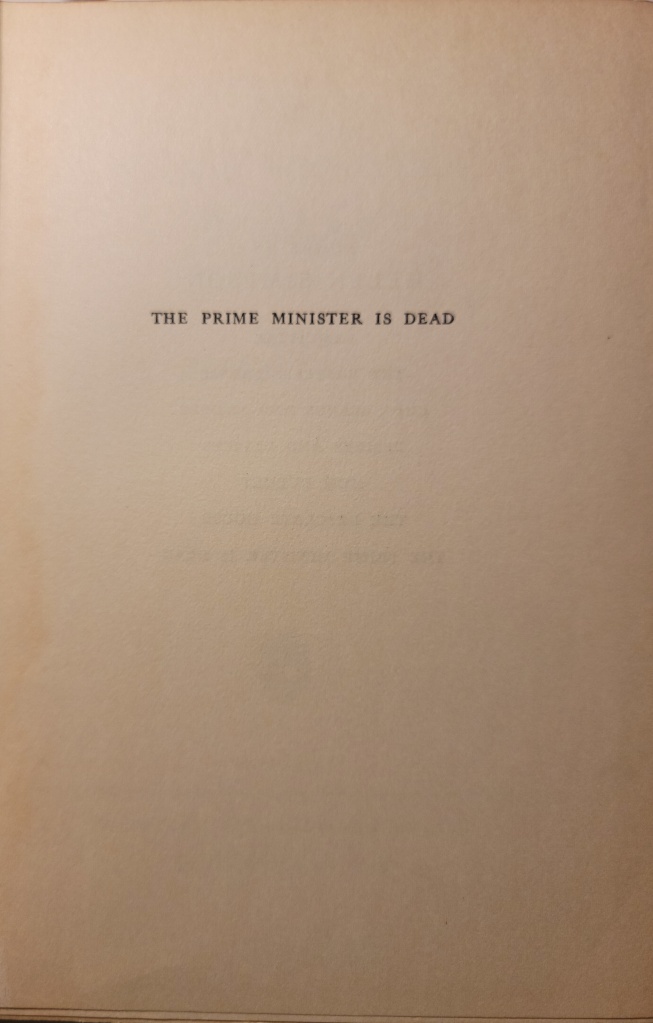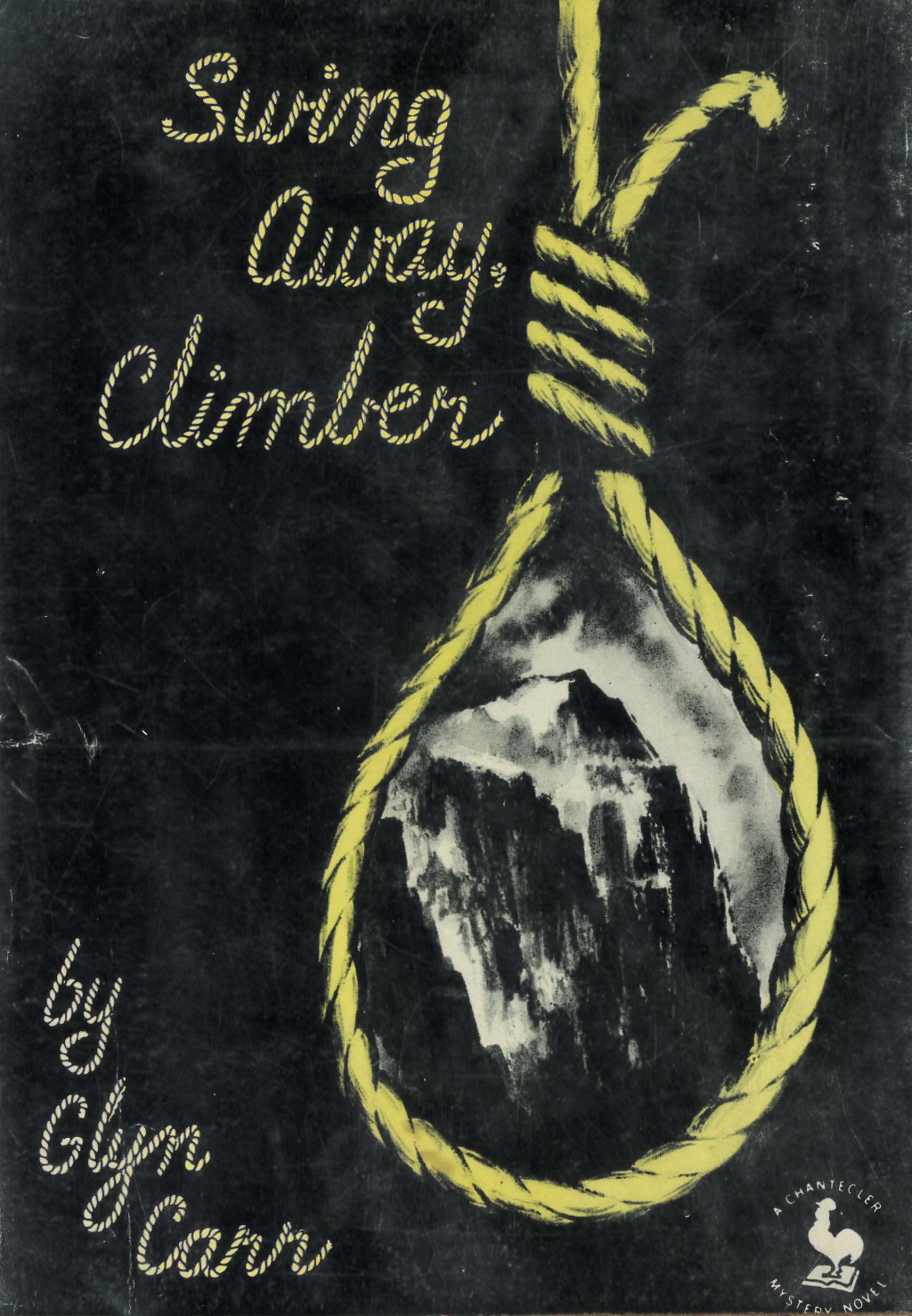
#8: Helen Simpson

Tall and pale, with thick dark wavy hair, Helen de Guerry Simpson was an astonishingly high achiever, who seemed to dedicate her life to proving that a woman could have it all.
Martin Edwards, The Golden Age of Murder (2015)
You may recall that when I wrote my post about Clemence Dane a few months ago as part of this series, I noted that I had struggled with the decision as to whether to write a single profile with her and Helen Simpson. The reason for considering doing that is that most of their detective fiction output was the result of collaborating with each other.
Indeed there seems to have been some speculation whether Simpson was actually a full member of the Detection Club in her own right as she is described as an ‘associate member’ in a contemporary list of members. Martin Edwards notes though in his survey of the history of the Detection Club, The Golden Age of Murder, that she was eminently qualified for membership in her own right and that her interest in the genre outlasted that of her writing partner.
One sign of that is that while Dane only wrote mysteries in collaboration, Simpson did write a mystery novel on her own and contributed to several of the Club’s collaborative works. She also was friendly with Dorothy L. Sayers, one of the leading members of the Detection Club, and was collaborating with her on a history of Lord Peter.
The portrait of Simpson in The Golden Age of Murder is not particularly lengthy but does a good job of giving a sense of her abilities and wide range of interests which included witchcraft and smoking cigars. One of those passions was politics which we will see reflected in the book discussed below…
The Prime Minister is Dead by Helen Simpson

Following the publication of Enter Sir John and Printer’s Devil, Helen Simpson went on to write this novel which was originally published in the UK as Vantage Striker in 1931. As you can see I have opted to use its American title for this post. That partly is to acknowledge the edition that I read but mostly it’s because I think the original title is terrible, conveying little sense of what the book is actually about to those unfamiliar with the term.
The novel is one of those which arguably exists on the edge of the genre. It is a story about a murder, its investigation and the resolution of the case yet that detective process never feels like the focus of the book. Rather I would suggest that the book feels like it is most concerned with exploring the political fallout from an event of the type depicted and working through how the establishment might respond to such a situation.
We begin shortly after the conclusion of a party leadership election in which a new Prime Minister, Mr. Aspinall, has been selected. That person was not regarded as the best or brightest but rather an affable and inoffensive lightweight. The assumption is that the runner-up, the International Secretary Justin Brazier, will resign. Instead he stubbornly holds onto his office while making it quite clear that he does not approve of his new leader. A political crisis seems to be in the offing so Aspinall decides he will try and reach out, arranging a private meeting between them over dinner. Rather than bridging their divide, the evening ends with Aspinall dead from a head injury.
One of the reasons that this story struck me as being on the edge of the genre was that it takes a really long time to get to its death and even once we do, it is several chapters before the manner of that death is ever described to the reader. Instead Simpson places the focus on establishing the professional relationships between the various characters. There are several lengthy sporting sequences – one that takes place in a boxing match, the other tennis – which serve as analogies of sorts to the situation being constructed. Both are solidly described though I felt both went on a little longer than I desired.
Those political relationships are quite interesting however and I appreciated the often witty observations and commentaries Simpson offers on politicians and elective office. It’s by no means razor sharp satire, but Simpson is thoughtful about her topic and does a good job creating credible characters to explore those issues with.
As I suggested earlier, I do feel that there are some issues with the pacing of this story if we are trying to read it as a work of mystery fiction. One of these is that Simpson devotes so much time to setting up her scenario that the murder sequence and investigation feel very short in comparison to the point of being rushed. This strikes me as a shame because when Simpson finally does have those elements in place in the final few chapters of her story, she does use them well to create a very interesting and original conclusion.
Unfortunately though it is rushed and there is little sport to be had in trying to play along with this one. Simpson offers little in the way of credible misdirection, leaving the murderer quite visible and easy to identify from an early point in the story. It perhaps doesn’t help either that some assumptions that may have been outrageous and unthinkable in 1931 would represent our default mindset today, meaning that one reveal is unlikely to surprise quite as it would have done ninety years earlier.
The Prime Minister is Dead may not be a classic work of detective fiction but it does offer some points of interest, particularly for those with an interest in all things Westminster. It also demonstrates that the author was as comfortable creating a story in that setting as they had been in exploring the theatrical world in Enter Sir John.
The Verdict: More interesting for its depiction of Westminster than its rushed and ultimately unsatisfying murder plot.
Further Reading
Martin Edwards wrote about this book under its original UK title Vantage Striker on his blog and also featured the title in his book The Story of Classic Crime in 100 Books.




Leave a comment